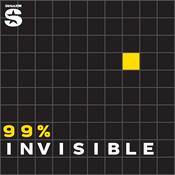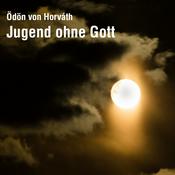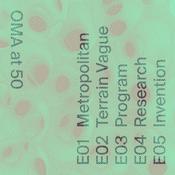Verfügbare Folgen
5 von 744
- René Esparza, "From Vice to Nice: Midwestern Politics and the Gentrification of AIDS" (UNC Press, 2025)Shifting the focus of AIDS history away from the coasts to the Twin Cities of Minneapolis and St. Paul, this impressive book uncovers how homonormative political strategies weaponized the AIDS crisis to fuel gentrification. During the height of the epidemic, white gay activists and politicians pursued social acceptance by assimilating to Midwestern cultural values. This approach, Dr. René Esparza argues in From Vice to Nice: Midwestern Politics and the Gentrification of AIDS (UNC Press, 2025), diluted radical facets of LGBTQ activism, rejected a politics of sexual dissidence, severed ties with communities of color, and ushered in the destruction of vibrant queer spaces.Drawing from archival research, oral histories, and urban studies from the 1970s through the 1990s, Dr. Esparza illustrates how the onset of the AIDS epidemic provided a pretext for further criminalization of perceived sexual deviance, targeting sex workers, “promiscuous” gay men, and transgender women. More than the criminalization of people and behaviors, this time period also saw increased targeting of urban venues such as bathhouses, adult bookstores, and public parks where casual, anonymous encounters occurred. Cleansing the city of land uses that undermined gentrification became a protective measure against AIDS, and the most marginalized bore the brunt of the ensuing surveillance and displacement. From Vice to Nice illuminates how, despite purporting seemingly progressive values, LGBTQ Midwestern politics of conformity leveraged the AIDS crisis to further instigate racial and sexual exclusion and fundamentally alter the urban landscape. This interview was conducted by Dr. Miranda Melcher whose book focuses on post-conflict military integration, understanding treaty negotiation and implementation in civil war contexts, with qualitative analysis of the Angolan and Mozambican civil wars. You can find Miranda’s interviews on New Books with Miranda Melcher, wherever you get your podcasts. Learn more about your ad choices. Visit megaphone.fm/adchoices--------52:07
- James Sears, "Queering Rehoboth Beach: Beyond the Boardwalk" (Temple UP, 2024)“Create A More Positive Rehoboth” was a decades-long goal for progress and inclusiveness in a charming beach town in southern Delaware. Rehoboth, which was established in the 19th century as a Methodist Church meeting camp, has, over time, become a thriving mecca for the LGBTQ+ community. In Queering Rehoboth Beach: Beyond the Boardwalk (Temple UP, 2024), historian and educator Dr. James Sears charts this significant evolution. Dr. Sears draws upon extensive oral history accounts, archival material, and personal narratives to chronicle the "Battle for Rehoboth,” which unfolded in the late 20th century, as conservative town leaders and homeowners opposed progressive entrepreneurs and gay activists. He recounts not just the emergence of the gay and lesbian bars, dance clubs, and organizations that drew the queer community to the region, but also the efforts of local politicians and homeowners, among other groups who fought to develop and protect the traditional identity of this beach town. Moreover, issues of race, class, and gender and sexuality informed opinions as residents and visitors struggled with the AIDS crisis and the legacy of Jim Crow. This interview was conducted by Dr. Miranda Melcher whose book focuses on post-conflict military integration, understanding treaty negotiation and implementation in civil war contexts, with qualitative analysis of the Angolan and Mozambican civil wars. You can find Miranda’s interviews on New Books with Miranda Melcher, wherever you get your podcasts. Learn more about your ad choices. Visit megaphone.fm/adchoices--------56:04
- Benjamin Schneider, "The Unfinished Metropolis: Igniting the City-Building Revolution" (Island Press, 2025)In The Unfinished Metropolis: Igniting the City-Building Revolution (Island Press, 2025), Benjamin Schneider argues that American city-building is a lost art. U.S. cities used to constantly evolve, experimenting with new urban designs and ambitious infrastructure projects, from railroads and subways to public housing and shopping malls. But in recent years, the country has continued pursuing the same mid-20th century urban development plans—freeways, downtown office towers, suburban housing developments. The Unfinished Metropolis covers how this pattern is why Americans are so dependent on their cars, why housing is so expensive and homelessness is at crisis levels, and why downtowns are struggling and communities are fraying. Over the course of an engaging tour of the built environment, Schneider explores common urban designs that shape our lives and color our cultural imagination: office parks, apartments, single family homes, and transit systems. He explains how these forms came to be, why they no longer function as promised, and introduces readers to the advocates and professionals around the country who are working on transformative new solutions. Benjamin Schneider is a freelance journalist covering all things urbanism. His work has appeared in Bloomberg CityLab, MIT Technology Review, Slate, The Nation, the Los Angeles Times, and many other publications. He also writes a Substack newsletter called, “The Urban Condition.” This interview was conducted by Timi Koyejo, an urbanist who has worked as a researcher at the University of Chicago and as an urban policy advisor to the City of Chicago. Learn more about your ad choices. Visit megaphone.fm/adchoices--------1:13:03
- “Rurality 2.0”: How City Migrants are Reshaping Norway’s Rural Regions with Tom BratrudIn today’s episode, we talk to Tom Bratrud about his ongoing, long-term work with city-dwellers who migrate to rural parts of Norway. This research forms the basis of Tom’s forthcoming book project, which has the working title Rurality 2.0: Redefining Urban-Rural Divides in the Mountains of Norway. Tom Bratrud is Associate Professor in Social Anthropology at the University of Bergen. His research investigates social life, political dynamics, value(es), religion/worldviews, emerging technologies, environmental issues and rural-urban relations. Prior to his work in his home valley of Valdres in southern Norway, he conducted extensive ethnographic fieldwork in Vanuatu in the South-Pacific—resulting in his first monograph Fire on the Island: Fear, Hope and a Christian Revival in Vanuatu (Berghahn 2022). Tom is the co-convenor of European Association of Social Anthropology (EASA)’s Future Anthropologies Network. Just after we spoke, Tom was also awarded the inaugural Thomas Hylland Eriksen Memorial Prize, presented during the Norwegian Anthropological Association’s Conference in Oslo at the end of October 2025. In explaining their decision, the jury commented that Bratrud “unites global and local perspectives and shows how social anthropological approach and methodology become a key to understanding ongoing change.” Tom Bratrud is Associate Professor of Social Anthropology at the University of Bergen. Tom Bratrud receives the Thomas Hylland Eriksen Memorial Prize. Learn more about your ad choices. Visit megaphone.fm/adchoices--------1:11:07
- Anna Zhelnina, "Private Life, Public Action: How Housing Politics Mobilized Citizens in Moscow" (Temple UP, 2025)Renovation, an urban renewal plan in Moscow that was announced in the spring of 2017, proposed to demolish thousands of socialist-era apartment buildings. In a country where it is rare under an authoritarian government, residents supported or opposed the redevelopment by mobilizing and organizing into local alliances. They were often shocked by their neighbors who were excited about the new housing or those suspicious of being displaced. Private Life, Public Action: How Housing Politics Mobilized Citizens in Moscow (Temple UP, 2025) by Dr. Anna Zhelnina traces how residents impacted by the relocation plan became activists despite having little to no experience organizing or even forming political affiliations and opinions. Dr. Zhelnina details the ways in which neighbors engaged in collective action, as well as the individual and structural changes these interactions caused. Dr. Zhelnina develops the concept of “housing strategies” to explain how residents’ debates with their neighbors about housing were shaped by their private life strategies. She applies her findings about housing in Moscow to ongoing questions about political mobilization, demonstrating how public engagement is shaped by historical and social contexts. Examining the intersection of housing, politics, and citizenship in contemporary Russia, Private Life, Public Action offers a new way to look at urban change. This interview was conducted by Dr. Miranda Melcher whose book focuses on post-conflict military integration, understanding treaty negotiation and implementation in civil war contexts, with qualitative analysis of the Angolan and Mozambican civil wars. You can find Miranda’s interviews on New Books with Miranda Melcher, wherever you get your podcasts. Learn more about your ad choices. Visit megaphone.fm/adchoices--------52:01
Weitere Kunst Podcasts
Trending Kunst Podcasts
Über New Books in Urban Studies
This podcast is a channel on the New Books Network. The New Books Network is an academic audio library dedicated to public education. In each episode you will hear scholars discuss their recently published research with another expert in their field.
Discover our 150+ channels and browse our 28,000+ episodes on our website: newbooksnetwork.com
Subscribe to our free weekly Substack newsletter to get informative, engaging content straight to your inbox: https://newbooksnetwork.substack.com/
Follow us on Instagram and Bluesky to learn about more our latest interviews: @newbooksnetwork
Podcast-WebsiteHöre New Books in Urban Studies, life is felicious und viele andere Podcasts aus aller Welt mit der radio.at-App
Hol dir die kostenlose radio.at App
- Sender und Podcasts favorisieren
- Streamen via Wifi oder Bluetooth
- Unterstützt Carplay & Android Auto
- viele weitere App Funktionen
Hol dir die kostenlose radio.at App
- Sender und Podcasts favorisieren
- Streamen via Wifi oder Bluetooth
- Unterstützt Carplay & Android Auto
- viele weitere App Funktionen

New Books in Urban Studies
Code scannen,
App laden,
loshören.
App laden,
loshören.


























